Creating Dynamic Segment
Dynamic segments in Reteno automatically include or exclude contacts based on live conditions you define. As a user’s behavior or attributes change, their segment membership updates in real time. This is essential for mobile apps where activity patterns shift daily (e.g., workouts logged, lessons completed, trial status, communication engagement).
Creating Dynamic Segment
PreconditionsBefore creating a dynamic segment, add the contact fields and custom events you plan to segment by in Reteno.
- Go to Contacts → Segments and click Add segment.

- Select the Dynamic segment type and click Create.
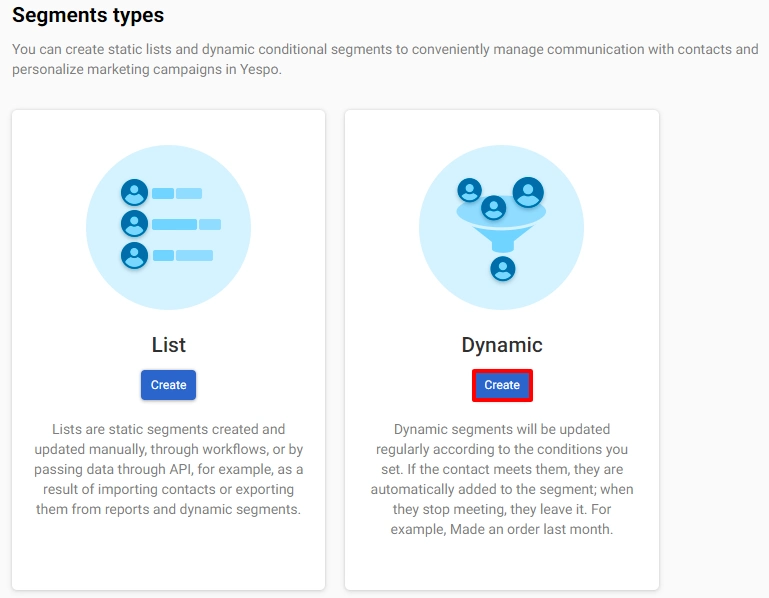
- Fill in general properties:
- Name (required) — displayed in the general segment list.
- Purpose (optional) — specify how the campaigns will be used. For example, for triggered emails, regular promo campaigns, etc.
- Tags (optional) — select from the list or add a new one for quick filtering and segment search.
- Click Next.
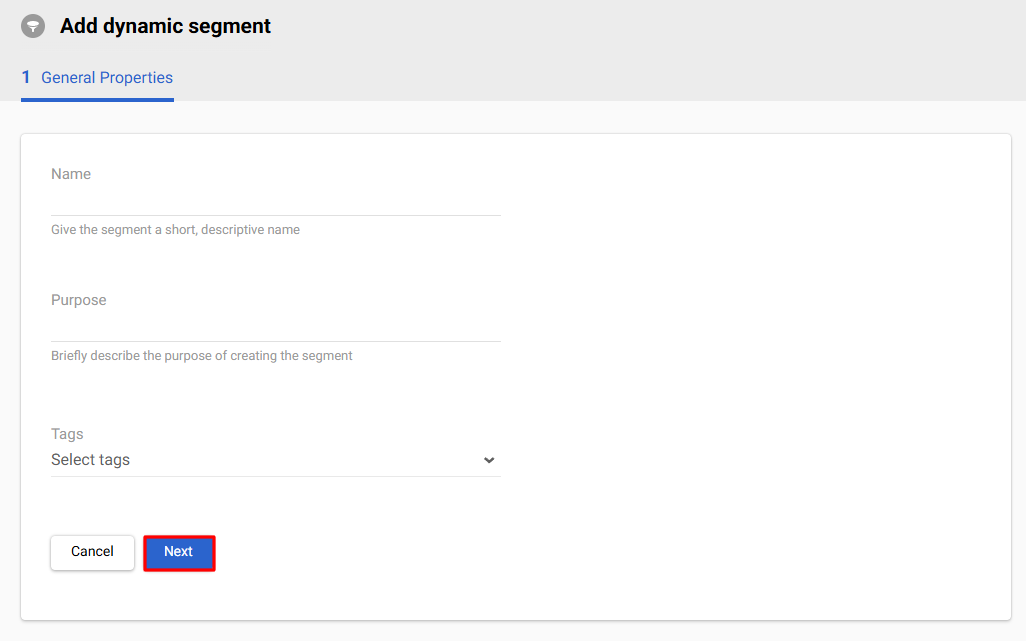
- Add condition.
For example, you need to select all subscribers who have read emails this month.
- Go to the Channels tab → Contact activity by Email → Last opened → During → This month.
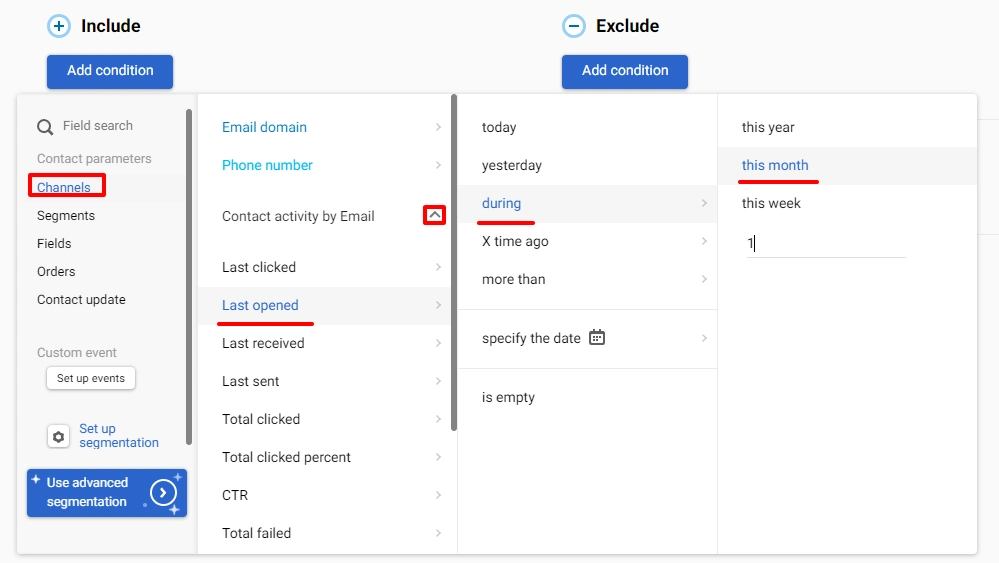
- To see what contacts have been added, click on Preview contacts in the segment.
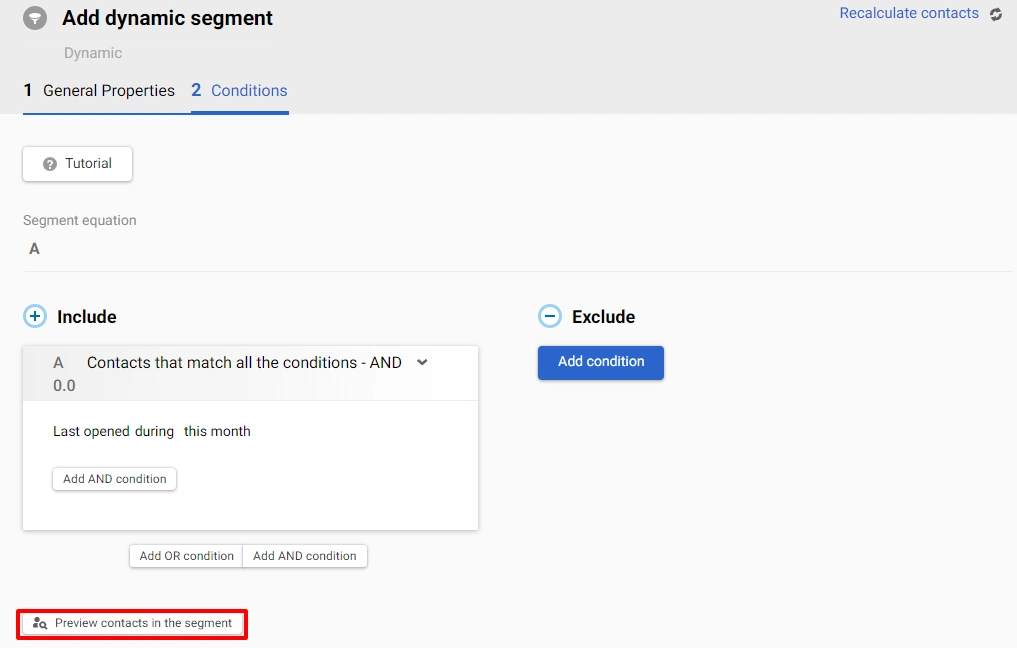
- To see how many contacts are in the segment, click on Recalculate contacts.
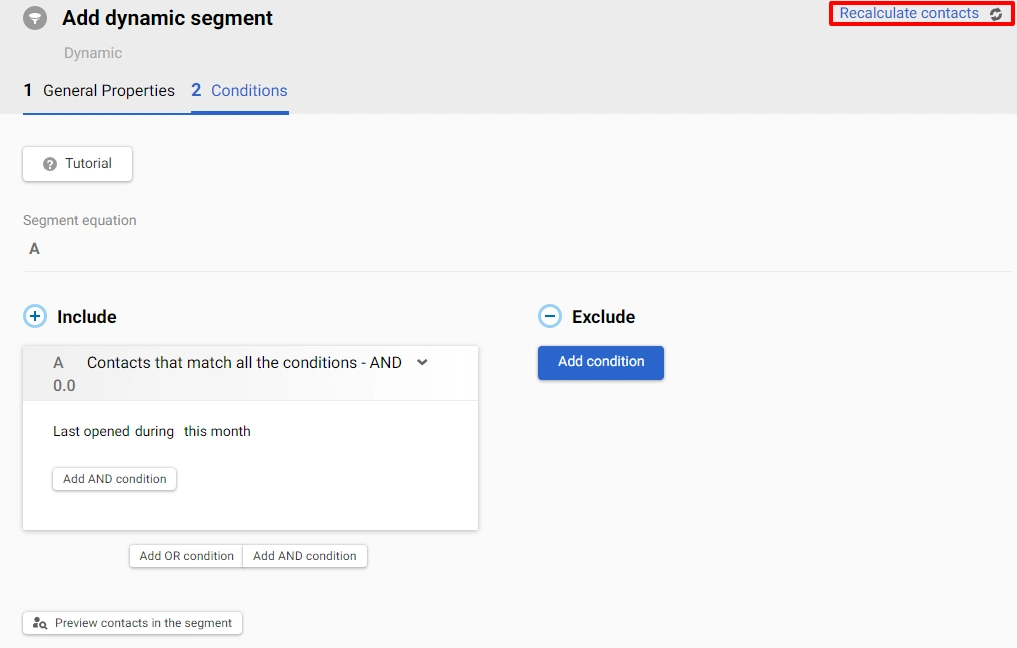
- You can copy a card to avoid having to recreate its conditions manually. By default, the copied card is added with an
ORoperator, which you can manually change toAND.
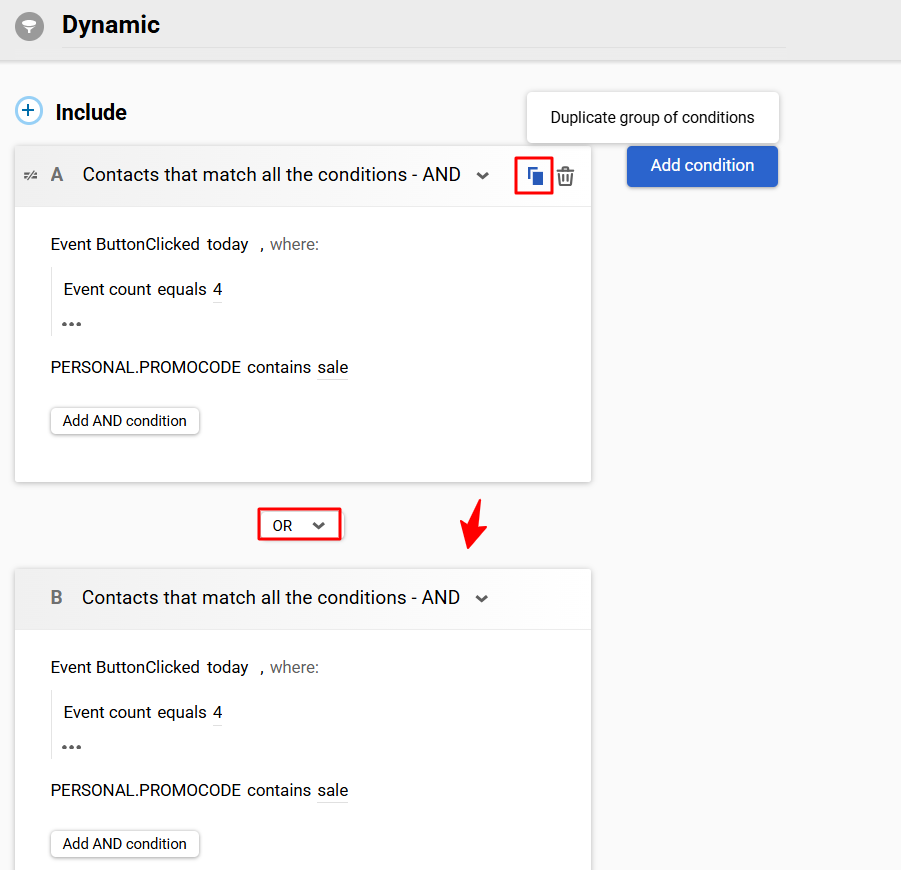
- After clicking Done, your segment appears in the list and can be used in campaigns and analytics.

How Card‑Based Conditions Work
Let's take a closer look at how to create a segment with multiple conditions.
1. Card conditions
Dynamic segments are built from cards. Each card can have one or more conditions, and cards are combined by operators.
Conditions inside a card
When adding conditions to a card, the segment will include only those contacts that match the specified conditions.
For example, to specify the segment for the Abandoned Subscription campaign, you can add two conditions:
- Event:
SubscriptionInitiated→ during → last 24 hours - Event:
PaywallViewed→ Event count → greater than 1 → during → last 24 hours (optional but recommended to focus on intent)
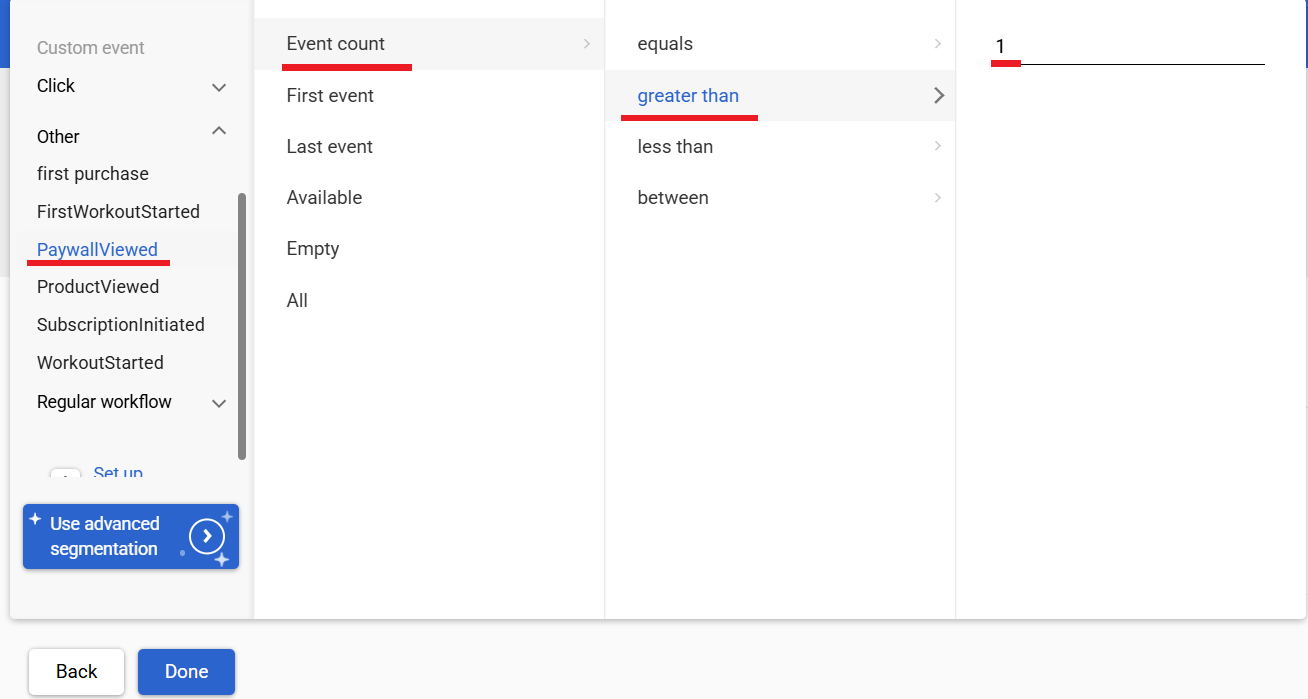
This card returns users who entered checkout and viewed the paywall at least twice within the last day — classic abandonment behavior. The card will look like this:
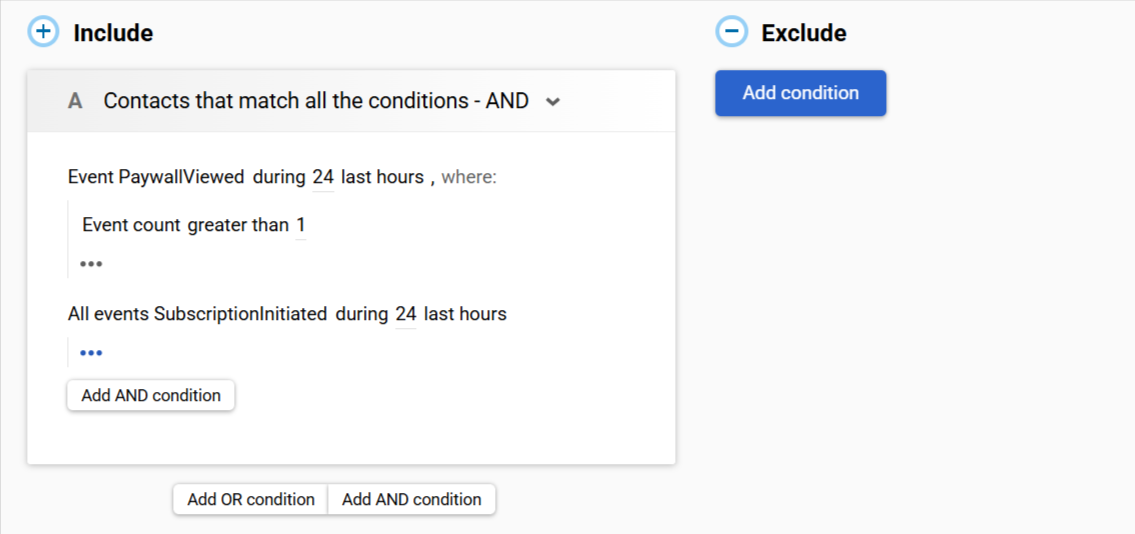
To broaden the audience, switch the card header to any conditions:
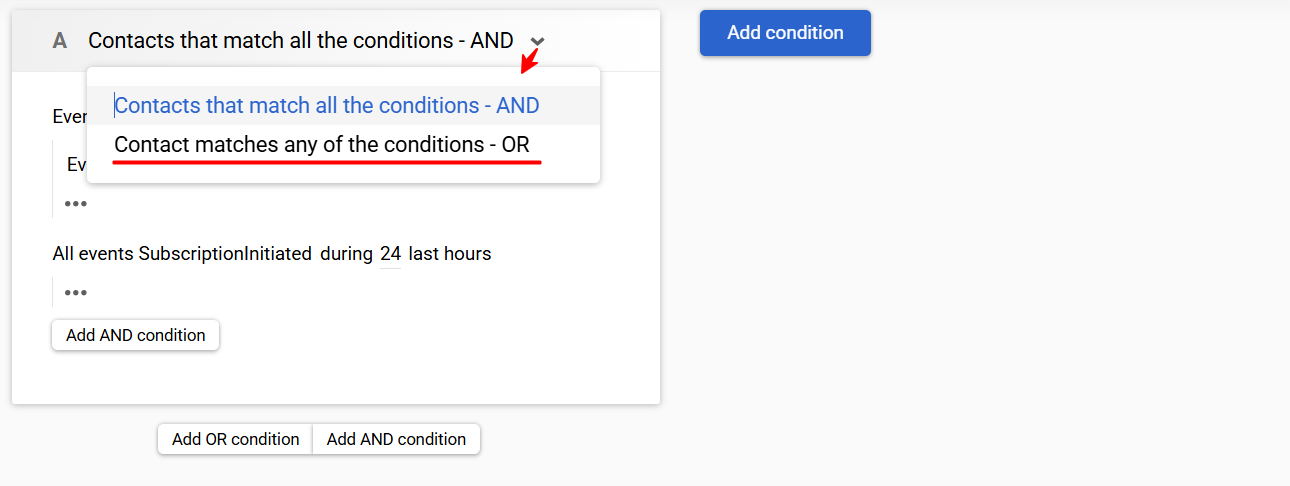
For example, you add the following conditions:
SubscriptionInitiated→ during → last 24 hours ORPaywallViewed→ greater than 1 → during → last 24 hoursPricingScreenOpened→ during → last 24 hours
The segment will include the contacts that either clicked on links in the email or read an email a week ago.

Excluding Conditions from a Card
Any of these conditions can be made negative. Click on ≠ to exclude any condition from the card.
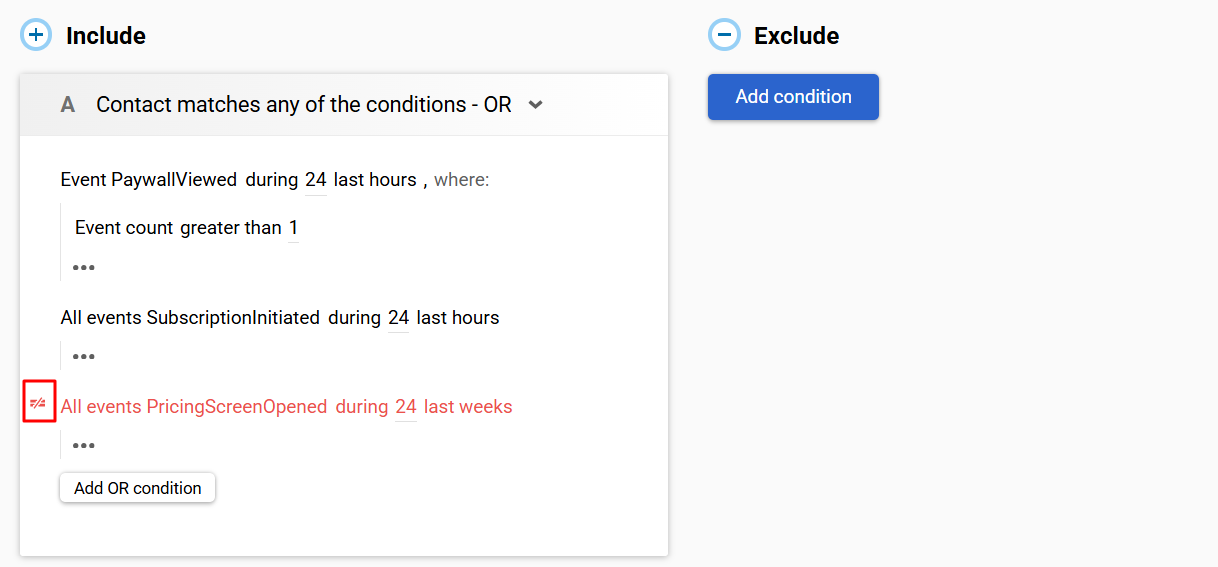
For example, you want to exclude users from some location. Add a parameter to Card A and mark it with ≠:
- ≠ Contact field:
location→ equals → London
Excluding the Entire Card
You can exclude the whole card. Such a card will be highlighted red and will have the not prefix in the segment equation.
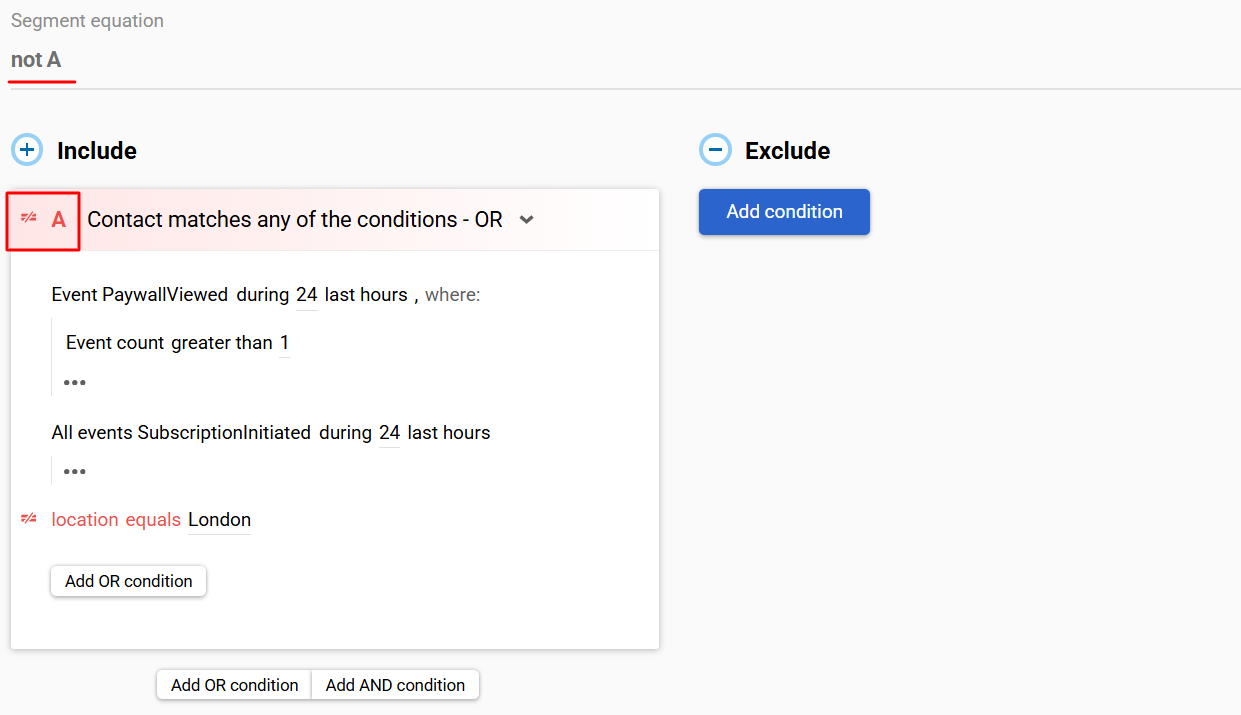
Excluding a Condition from the Segment
With many cards, when you need to exclude a particular condition from the entire segment, use the right column. Contacts that match the conditions from the right column will not be included in the segment.
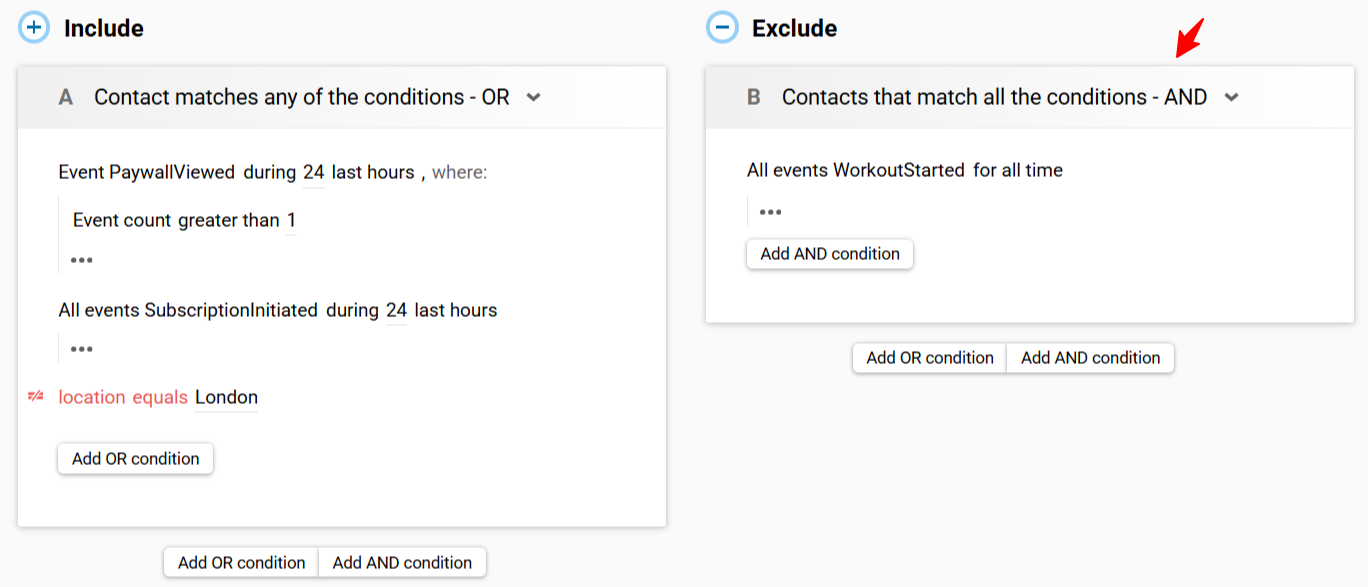
You can exclude several cards with different conditions.
2. Equation Operators AND/OR
For convenience of operation, you can group conditions in several cards using the following operators:
AND — the segment will include all the contacts that match the conditions of all cards.
OR — the segment will include the contacts that match the conditions of any card.
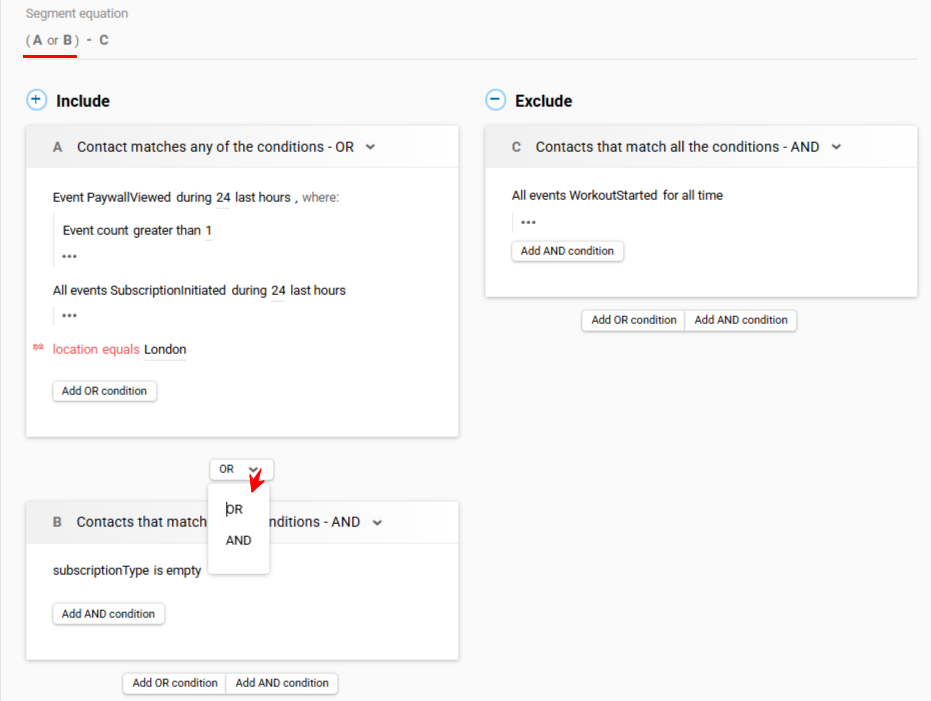
3. Segment Equation
With many cards, the segment equation is displayed in the following formula: (A or B) – C.
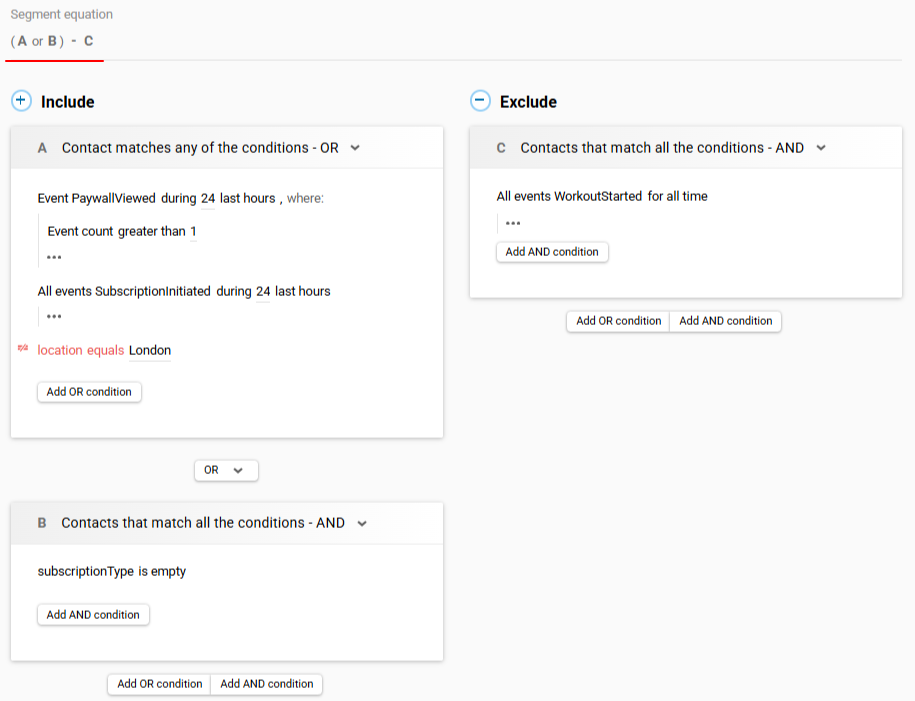
- The equation shows in what order the cards are processed.
- Brackets are put automatically to unite the cards based on the processing priorities.
- The letters in the equation match the cards. A cursor on the letter automatically highlights the corresponding card.
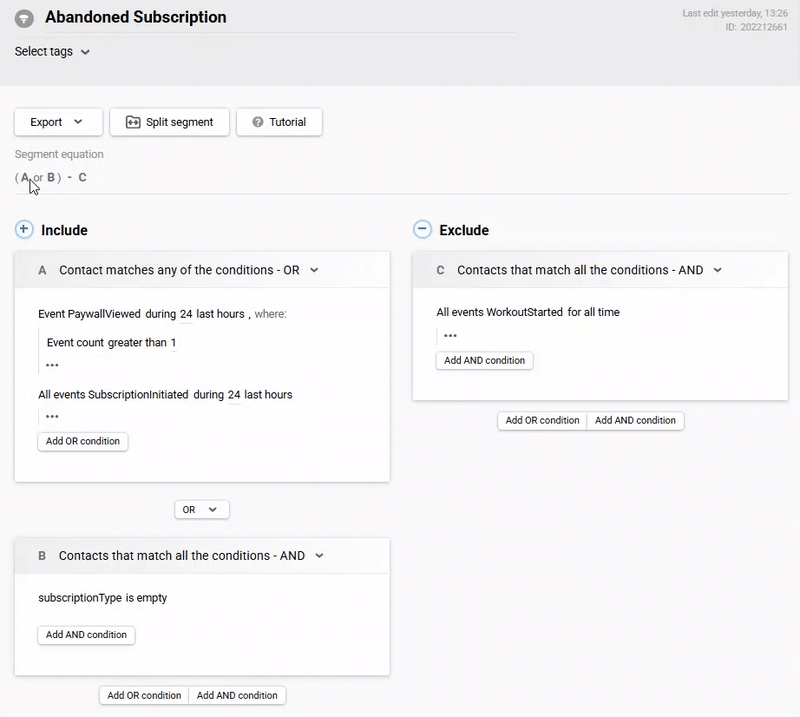
- If the card isn’t displayed on the screen, hover over the corresponding letter in the equation to see the conditions.

ImportantBy default, the contacts that are processed first are united by
ANDoperator. In the equation, such cards are enclosed in brackets.

For example, the equation (A and B) or C will be processed as following:
- First, the system will find the contacts that match the conditions in A and B cards.
- Next, it will add the contacts that match the conditions in C card.
Useful Features
For more convenience, all the features are now available right in the segment interface after you’ve created a card:
1. Searching Events and Parameters
The search logic of events and parameters allows you to quickly and easily set the conditions for forming a dynamic segment.
The search works both in the first column (names of event types and contact parameters) and in the second (names of event parameters and additional contact fields).
If both the event and its parameter match the search query, you will see the corresponding events in the first column, and in the second column, not only the parameters that match the search query but also all the parameters of the events from the first column.

If you need to find all events that contain a certain parameter, enter its name in the search field. The first column will display the corresponding events, and the second column will display a list of event parameters indicating which event contains the parameter from the search query.
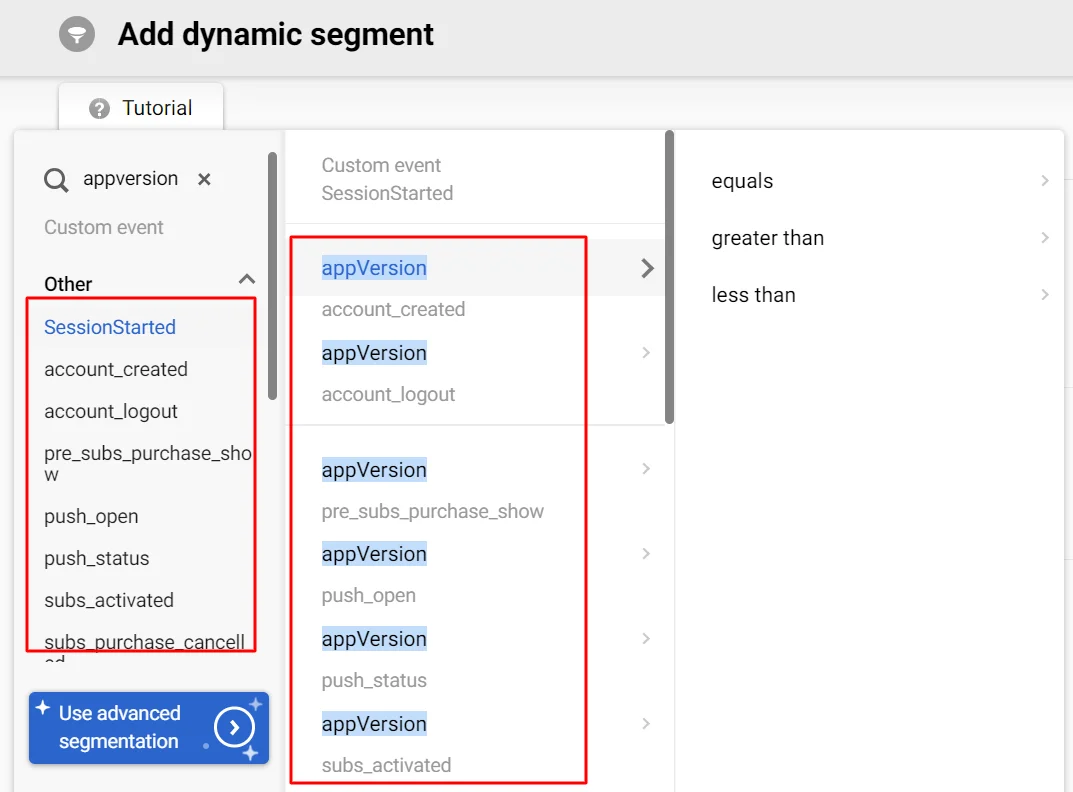
When you hover over a parameter in the first column, the name of the event type containing this parameter is highlighted.
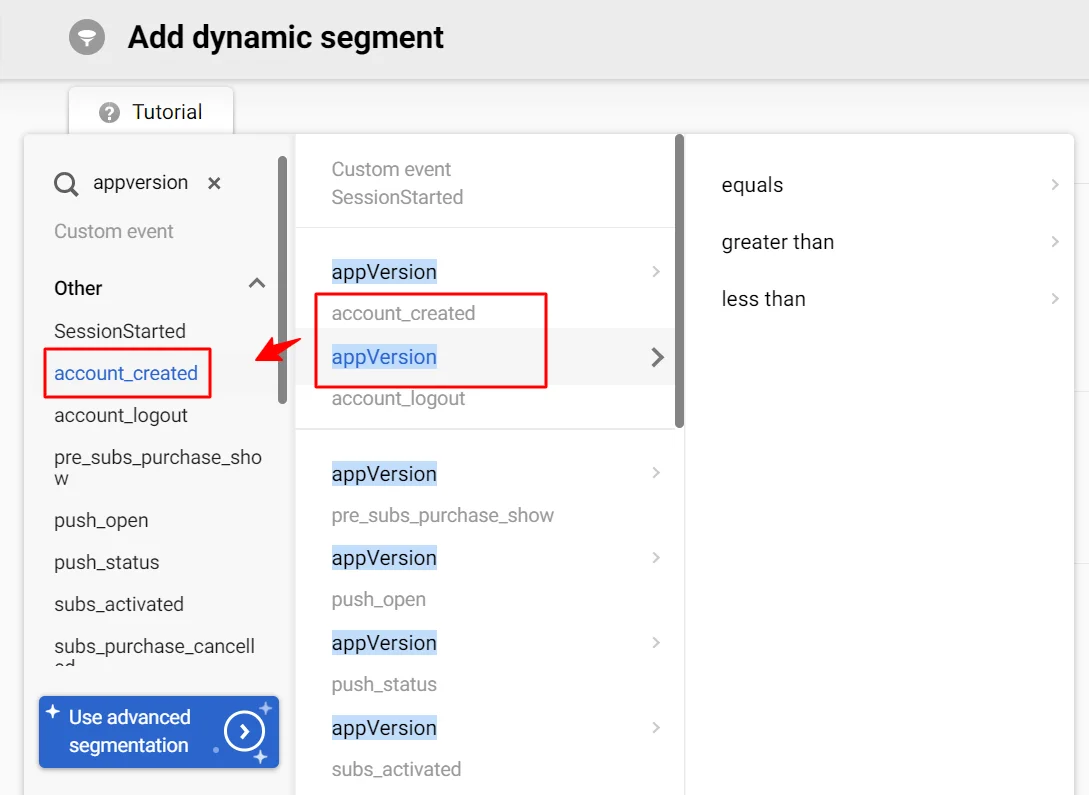
Click on a specific event's name to see a list of all parameters. The parameter that matches the search query is highlighted.
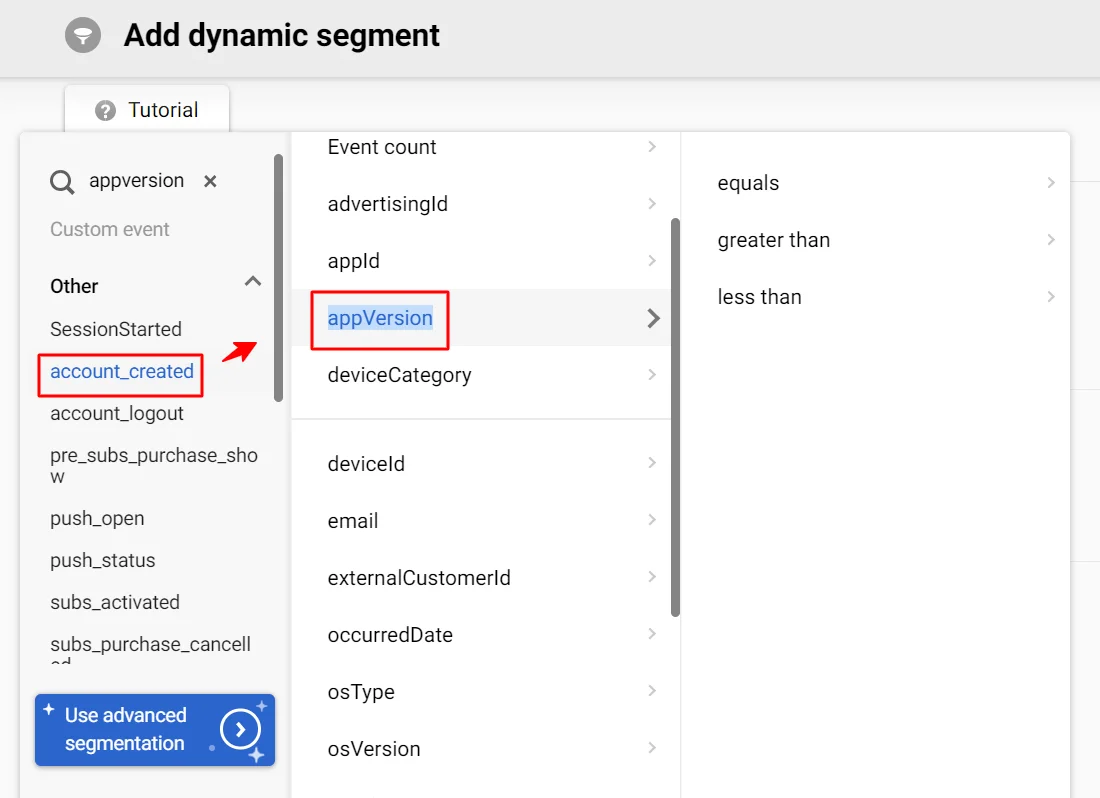
2. Export a Dynamic Segment to the List
You can export all the contact details as a static segment to the existing list. This is relevant for triggers so that a campaign for a segment can be launched instantly.
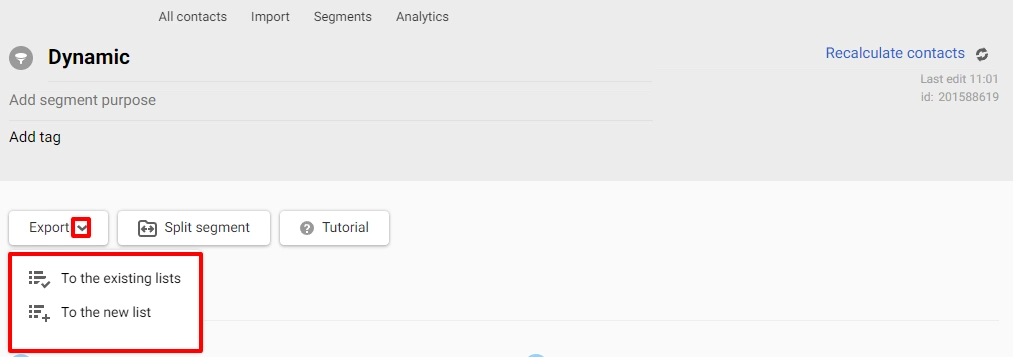
3. Splitting a Segment
This might be useful for A/B testing.

ImportantYou can split a segment only if it includes more than 10 contacts. We recommend conducting split tests with more than 2,000 active contacts to avoid inaccurate results.
4. Tutorial
For any information on the segment creation, see Tutorial at the top of the page.
Hints are divided into 5 categories:
- Conditions inside cards
- Formula for contacts calculating
- Operator
NOT AND,ORbetween cards- Excluding contacts

Updated 2 months ago
